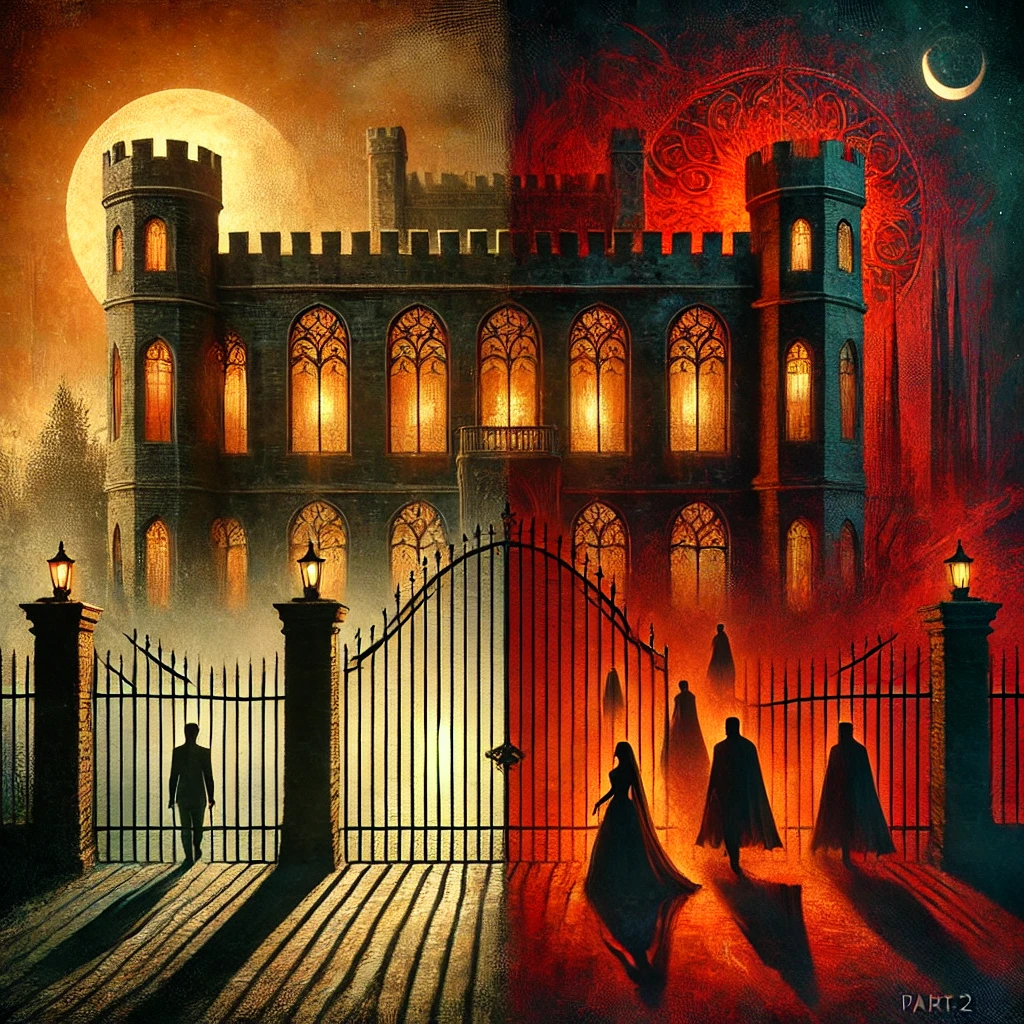…the Red Death is not a destroyer but a liberator, tearing down the walls of denial and exposing the truth that lies within.

Prince Prospero’s fortress, with its iron gates, opulent halls, and extravagant masquerade, is a striking metaphor for our attempts to deny the inevitable. It represents the walls we build to protect ourselves from discomfort, fear, and the truths we do not want to face. Yet, as Edgar Allan Poe so poignantly demonstrates, no wall is high enough, no gate strong enough, to keep out what we refuse to confront within ourselves.
Avoidance and the Shadow Self
From my perspective, Prospero’s retreat into his fortress mirrors the human tendency to avoid the shadow and the deeper truths of existence. Instead of allowing the Red Death—a symbol of mortality and the shadow self—to be acknowledged, he seeks to isolate himself from it. In doing so, he creates an illusion of control and safety, even as the shadow grows ever closer.
The fortress itself is richly symbolic. Its iron gates and secluded location reflect the barriers we erect within our own consciousness to keep the shadow at bay. These barriers might take the form of distractions, denial, or the stories we tell ourselves to avoid what we find uncomfortable. Yet the shadow is not an external enemy; it is an integral part of the self. By walling off the Red Death, Prospero also walls himself off from integration, growth, and true freedom.
Masks and Distractions
The masquerade within the fortress represents another layer of avoidance. The masks and costumes worn by Prospero and his guests symbolize the personas we adopt to hide our true selves. These personas are often crafted to conform to societal expectations or to shield us from vulnerability. Yet, as the story reveals, these masks cannot protect us from the truth. The arrival of the Red Death exposes the fragility of these illusions, forcing the revelers to confront what they sought to avoid.
Prospero’s insistence on pleasure and distraction further underscores this theme. The abundance of music, dance, and opulence within the fortress reflects humanity’s tendency to seek comfort and escape in external pleasures. These distractions may temporarily soothe, but they cannot address the deeper call of the soul. The shadow waits patiently, undeterred by the noise and revelry. Its presence is inevitable, and its arrival is transformative.
A Cautionary Tale for Seekers
In many ways, Prospero’s story serves as a cautionary tale for spiritual seekers. The path of awakening is not about building fortresses or crafting masks. It is about allowing—allowing the shadow to reveal itself, allowing the uncomfortable truths to surface, and allowing the self to embrace its wholeness. When we resist this process, we create inner conflict. When we allow it, we find freedom.
From a Gnostic perspective, Prospero’s fortress can also be seen as a metaphor for separation consciousness. By isolating himself from the Red Death and the external world, he embodies the illusion of separation that is central to the human condition. This illusion keeps us from recognizing our interconnectedness and the unity of all aspects of self, including the shadow. The journey of awakening involves dismantling this illusion and returning to the realization that all is part of the whole.
The Shadow as a Liberator
The Red Death’s entry into the fortress symbolizes the inevitable collapse of these barriers. No matter how elaborate the defenses, the shadow will find its way in. Yet this is not a moment of defeat but of grace. The arrival of the Red Death forces Prospero to confront what he has long denied, offering an opportunity for transformation. In this way, the Red Death is not a destroyer but a liberator, tearing down the walls of denial and exposing the truth that lies within.
Reflection: Opening the Gates
As we reflect on Prospero’s story, we are reminded of the futility of avoidance. The walls we build to protect ourselves often become prisons. The masks we wear to hide our truth often prevent us from experiencing authenticity. And the distractions we cling to often keep us from hearing the deeper call of the soul. Yet, when we allow the shadow to enter, we discover that it holds the key to our liberation.
The fortress of denial cannot withstand the power of truth. The Red Death’s entry is a reminder that the shadow is not something to be feared but embraced. It is a guide, leading us to the heart of who we are. As we continue this journey through The Masque of the Red Death, let us reflect on the fortresses we have built within ourselves. What are we keeping out? What truths are we avoiding? And what might happen if we opened the gates and allowed the shadow to reveal its gifts?
Take nothing seriously, least of all yourself.
